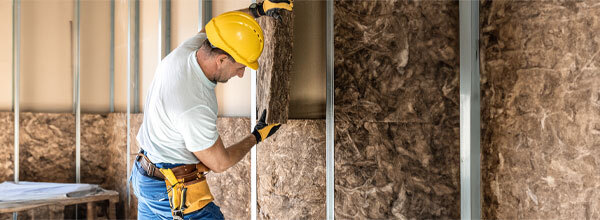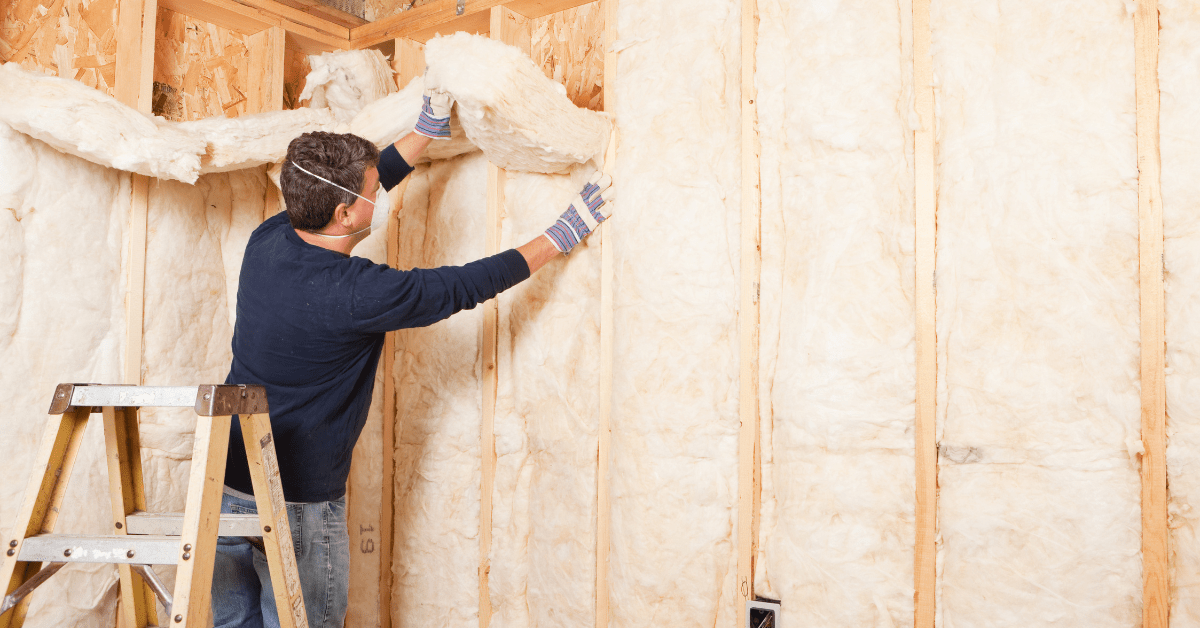
Proper residential insulation in Lenox homes can reduce energy bills by 15-30% through preventing heat transfer and air leakage. Focus on insulating your attic, walls, and floors with materials like fiberglass, cellulose, or spray foam, prioritizing areas with the largest temperature differences. For maximum savings, combine proper insulation with air sealing and choose materials with higher R-values suitable for Lenox’s climate zone.
Lenox residents face significant seasonal temperature variations, making efficient home insulation crucial for maintaining comfort while controlling utility costs. The investment in quality insulation typically pays for itself within 2-5 years through consistent utility savings.
Insulation Types and Their Benefits for Lenox Homes
Different insulation materials offer varying benefits for homes in Lenox’s climate conditions:
| Material | R-Value per Inch | Installation Method | Best Applications | Average Cost |
|---|---|---|---|---|
| Fiberglass | 2.2-4.3 | Batts, rolls, blown-in | Attics, walls, floors | $0.90-$1.50/sq ft |
| Cellulose | 3.2-3.8 | Blown-in, dense-packed | Attics, existing walls | $1.20-$2.00/sq ft |
| Spray Foam (Open Cell) | 3.5-3.7 | Spray application | Walls, attics, rim joists | $1.50-$2.50/sq ft |
| Spray Foam (Closed Cell) | 6.0-7.0 | Spray application | All areas, moisture-prone spaces | $2.00-$3.50/sq ft |
| Rigid Foam Board | 3.8-6.5 | Cut and fit | Basement walls, exterior sheathing | $1.20-$2.50/sq ft |
Bonus Tip: Combining different insulation types often yields the best results. For example, using spray foam for air sealing around penetrations and fiberglass in wall cavities provides both air sealing and thermal resistance at a reasonable price.
Key Areas to Insulate for Maximum Savings in Lenox
Prioritizing certain areas will deliver the biggest impact on your utility bills:
Attic Insulation
The attic represents the largest area of heat loss in most Lenox homes. Adding insulation here typically yields the highest return on investment, often reducing heating costs by 10-20%.

For Lenox’s climate zone, attics should have insulation rated at R-49 to R-60 minimum. This translates to approximately 16-20 inches of fiberglass or cellulose insulation.
Wall Insulation
Uninsulated or poorly insulated walls can account for 20-30% of a home’s heat loss. For existing homes, blown-in cellulose or injectable foam offers effective solutions without major reconstruction.
Basement and Crawlspace Insulation
In Lenox’s climate, insulating basements and crawlspaces prevents significant heat loss during winter months. Insulating basement walls rather than the ceiling is often more effective for homes with heating equipment in the basement.

Technical Specifications for Lenox Climate Zone
Lenox falls within Climate Zone 5, which has specific insulation recommendations:
| Area to Insulate | Minimum Recommended R-Value | Depth with Fiberglass | Depth with Cellulose |
|---|---|---|---|
| Attic | R-49 to R-60 | 16-20 inches | 13-17 inches |
| Walls | R-13 to R-21 | 3.5-5.5 inches | 3-5 inches |
| Floors | R-25 to R-30 | 8-10 inches | 7-8 inches |
| Basement Walls | R-10 to R-15 | 3-4 inches | 3-4 inches |
| Crawlspace Walls | R-10 to R-15 | 3-4 inches | 3-4 inches |
According to Energy Star data, proper insulation based on these specifications can reduce home heating and cooling costs by an average of 20% in the Lenox area.
Air Sealing: The Essential Companion to Insulation
Insulation works best when combined with proper air sealing. Even the highest R-value insulation loses effectiveness when air leaks are present.
Common air leakage points to address include:
- Attic hatches and pull-down stairs
- Recessed lighting fixtures
- Plumbing and electrical penetrations
- Chimney and vent penetrations
- Windows and doors
- Rim joists in basements or crawlspaces
Bonus Tip: A professional blower door test can identify hidden air leakage paths that might otherwise go undetected, helping prioritize air sealing efforts before adding insulation.
Things to Consider Before Making a Decision
Before investing in new insulation for your Lenox home, evaluate these important factors:
Current Insulation Status
Assess your existing insulation levels and condition. In many homes, simply adding to what’s already there can be cost-effective.
Moisture Management
Lenox homes can face moisture challenges. Ensure any insulation project includes appropriate vapor barriers and addresses potential moisture sources to prevent future damage and health issues.
Home Age and Construction
Older Lenox homes may have unique considerations, including potential knob-and-tube wiring (which shouldn’t be covered with insulation) or asbestos-containing materials that require professional handling.
Return on Investment Timeline
While premium options like closed-cell spray foam offer superior performance, they come at a higher initial cost. Consider how long you plan to stay in your home when choosing insulation types and determining your budget.
Cost vs. Savings Analysis
Understanding the financial impact of different insulation approaches helps make informed decisions:
| Insulation Project | Average Cost for 1,500 sq ft Home | Estimated Annual Savings | Payback Period |
|---|---|---|---|
| Attic Insulation Upgrade | $1,800-$3,000 | $250-$500 | 4-7 years |
| Wall Insulation | $2,500-$4,000 | $200-$400 | 6-12 years |
| Basement Insulation | $1,500-$3,000 | $150-$300 | 5-10 years |
| Comprehensive Package | $5,000-$10,000 | $500-$1,000 | 5-10 years |
Market data shows that homes with documented energy efficiency improvements like insulation upgrades typically sell for 2-5% more than comparable properties without such improvements.
DIY vs. Professional Installation
While some insulation projects can be DIY-friendly, others benefit from professional expertise:
DIY-Appropriate Projects
- Adding rolled or batt insulation in accessible attics
- Installing rigid foam boards in unfinished spaces
- Basic weatherstripping and caulking
Professional-Recommended Projects
- Blown-in wall insulation
- Spray foam applications
- Air sealing in complex areas
- Homes with existing moisture or mold issues
Professional installers have specialized equipment that ensures proper density and coverage, particularly important for blown-in or spray foam applications.
Common Questions About Insulation in Lenox

How much can I really save on utility bills?
Most properly insulated homes in Lenox see savings of 15-30% on heating and cooling costs, depending on the previous insulation condition and the comprehensiveness of the new installation.
Is insulation a year-round benefit?
Yes. While many Lenox residents focus on winter heat retention, proper insulation also keeps homes cooler in summer by preventing heat from entering the living space.
Can adding insulation help with noise reduction?
Absolutely. Many insulation materials, particularly dense-packed cellulose and foam products, provide significant sound-dampening benefits in addition to energy savings.
How long does residential insulation last?
Quality insulation properly installed can last 20-100 years, depending on the material. Fiberglass and cellulose typically last 20-30 years, while spray foam can last 80+ years if undisturbed.
Are there any tax incentives for insulation upgrades?
Lenox residents may qualify for federal tax credits, utility rebates, and sometimes local incentives that can reduce the net cost of insulation projects by 10-30%. Check with your tax professional and local utility for current programs.
About South Chicago Insulation
South Chicago Insulation specializes in providing energy-efficient insulation solutions for homes in the Lenox area. With a team of experienced professionals, the company offers comprehensive insulation services including attic insulation, wall insulation, basement insulation, and air sealing. They focus on helping homeowners reduce energy costs through properly installed insulation that meets the specific needs of homes in the local climate.
Their certified technicians evaluate each home individually to recommend the most cost-effective insulation solutions based on the home’s construction, existing insulation, and the homeowner’s budget. South Chicago Insulation uses high-quality materials and modern installation techniques to ensure maximum energy efficiency and comfort.
Ready to Lower Your Utility Bills?
Proper insulation is one of the most cost-effective ways to reduce utility bills in Lenox homes. By focusing on high-priority areas like the attic and walls, using appropriate materials for your specific situation, and ensuring proper installation, you can create a more comfortable home while significantly reducing energy costs for decades to come.
South Chicago Insulation is a trusted local provider of high-quality insulation services, proudly serving homeowners across Lenox and surrounding areas. With years of experience, expert technicians, and a commitment to energy efficiency, we help clients enhance home comfort and savings through tailored insulation solutions. Whether you’re upgrading old insulation or starting fresh, we ensure the job is done right the first time.
Get Started Today
For professional guidance on your insulation project, contact South Chicago Insulation at (779) 803-8025 or email [email protected]. Let us help you make your home more energy-efficient and cost-effective—schedule your consultation today!
Author and Reviewer:
Author: Bob Gasca attended his first spray foam training in 2007 and has continued to pursue yearly training to stay current with the latest technology and practices. He is a certified Spray Foam Master Installer through the SPFA and a member of the SPFA. Additionally, Bob serves as a Spray Foam Worldwide Ambassador, sharing information with spray foam professionals globally. Recently, he returned from a building science training, where he expanded his knowledge on how weather conditions affect home performance, helping him better diagnose and improve home health for families. Bob specializes in finding solutions to complex moisture and air infiltration issues.
Reviewer: Noah Gonzalez reviewed this article and drew on 9 years of experience to offer suggestions that make the guidance more directly useful for insulation contractors.